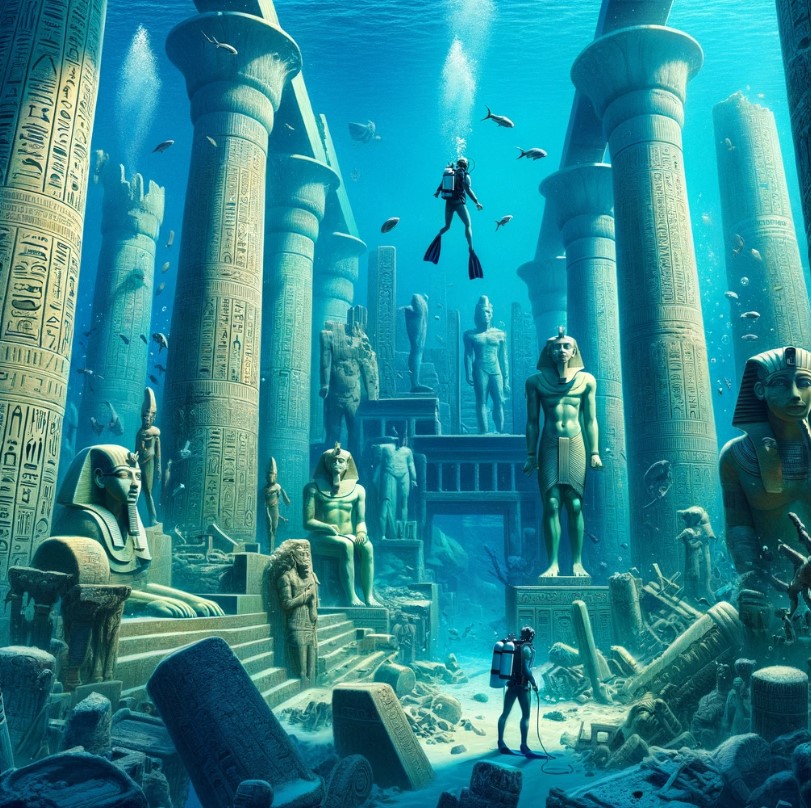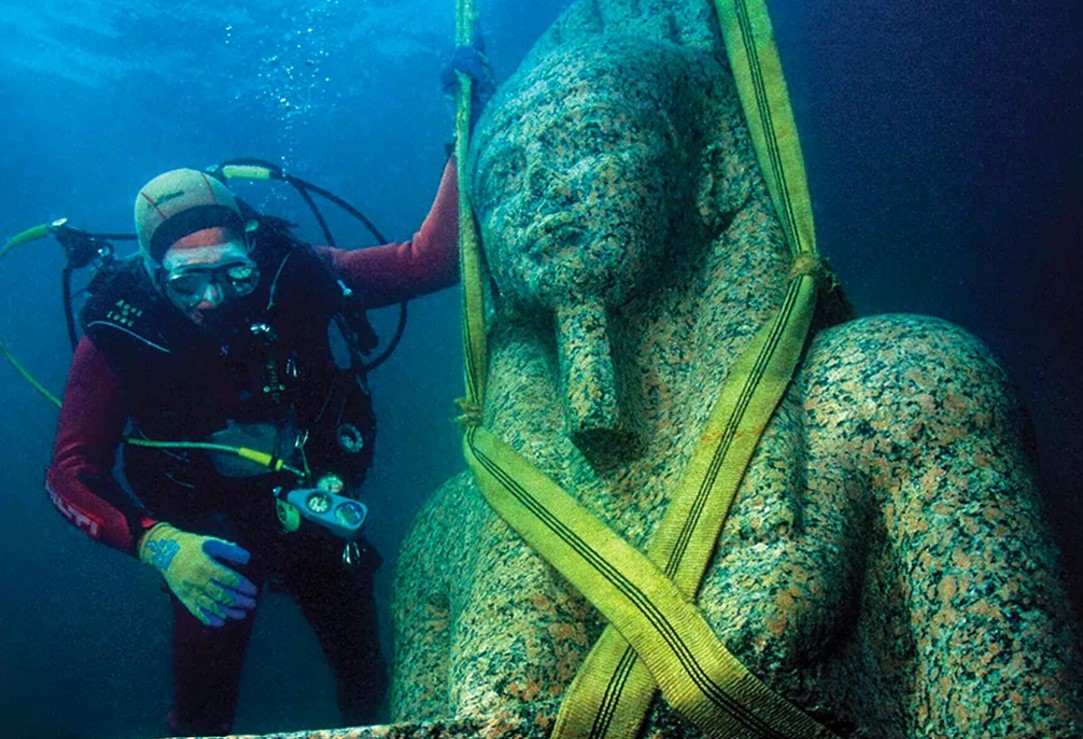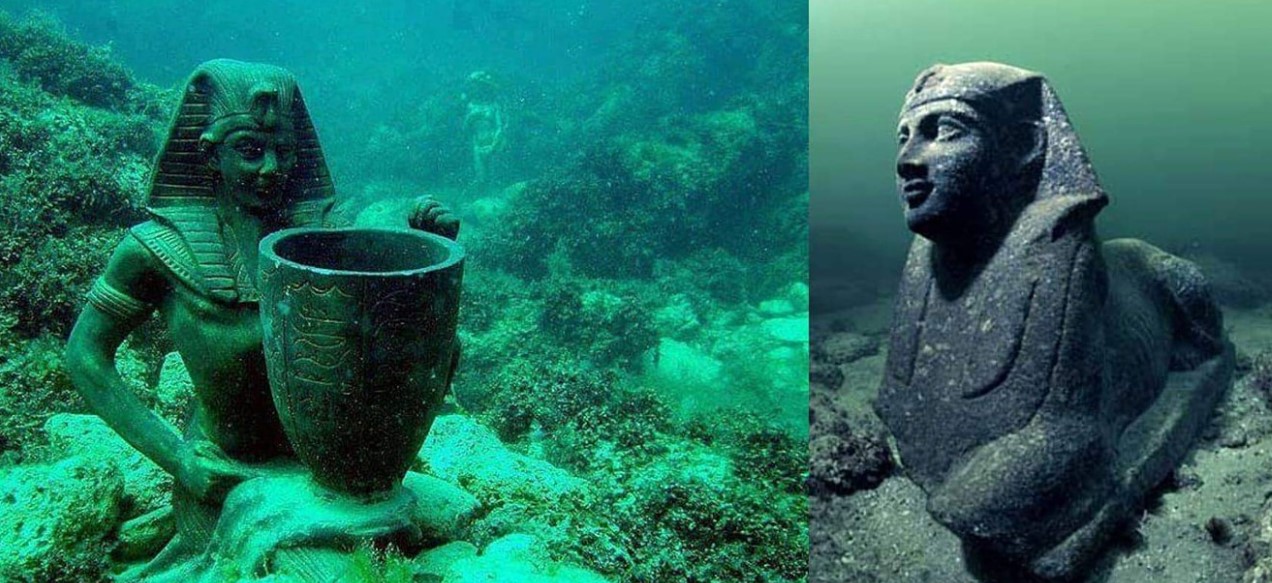The submerged ruins of Cleopatras Palace off the coast of Alexandria, Egypt, stand as a testament to the grandeur of one of history’s most iconic rulers, Cleopatra VII. Discovered in the late 1990s by French marine archaeologist Franck Goddio and his team, this underwater archaeological site has captivated historians, archaeologists, and enthusiasts worldwide. Dating back to the Ptolemaic period over 2,000 years ago, the ruins provide a fascinating glimpse into the opulence of ancient Egypt during Cleopatra’s reign. Let’s follow archeology.dulichvn.net to learn and discover the hidden things under the ocean.
Discovery of Cleopatras Palace
Led by Franck Goddio
In the late 1990s, Franck Goddio, a renowned French marine archaeologist, embarked on a groundbreaking mission to uncover the remains of ancient Alexandria. His efforts culminated in the discovery of Cleopatra’s submerged palace beneath the waters of the Mediterranean Sea, near the modern city of Alexandria.

The Significance of the Find
Cleopatras Palace had long been a subject of historical fascination, with its exact location remaining a mystery for centuries. The discovery marked a major milestone in underwater archaeology, revealing a wealth of artifacts that shed light on the lives of the Ptolemaic rulers.
Exploration Challenges
Unearthing the palace was no small feat. The site, buried under layers of sand and debris, required advanced technology, including sonar scanning and remotely operated vehicles (ROVs). Despite these challenges, Goddio’s team successfully uncovered the submerged treasures.
The Opulence of Cleopatra’s Reign
Architectural Marvels
The ruins of Cleopatras Palace include massive stone columns, intricately carved statues, and fragments of ornate buildings. These structures reflect the grandeur of Hellenistic architecture, blending Greek and Egyptian styles.

Exquisite Artifacts
Among the most notable finds were statues of Egyptian gods, depictions of the Ptolemaic rulers, and various ceremonial objects. These artifacts provide invaluable insights into the artistry and craftsmanship of ancient Egypt.
A Glimpse into Cleopatra’s World
Cleopatra VII, the last active ruler of the Ptolemaic dynasty, was known for her intelligence, charm, and political acumen. The artifacts from her palace reveal her penchant for luxury and her dedication to maintaining Egypt’s cultural and artistic heritage.
Theories Behind the Submersion
Natural Disasters
Historians and archaeologists believe that Cleopatras palace was submerged due to natural disasters. Earthquakes and subsequent tsunamis are thought to have caused the land supporting the palace to collapse into the Mediterranean Sea.

Rising Sea Levels
Another contributing factor may have been the gradual rise in sea levels over centuries. The shifting coastline of Alexandria played a role in burying the palace under layers of water and sediment.
A Lost Legacy Rediscovered
Despite its submersion, the palace’s ruins have remained remarkably well preserved, offering a unique window into a world that was thought to be lost forever.
Cultural and Historical Significance
Insights into Hellenistic Egypt
The discovery of Cleopatras Palace has deepened our understanding of the Hellenistic period in Egypt. The blend of Greek and Egyptian influences found in the ruins highlights the cultural exchange that characterized Cleopatra’s reign.

Cleopatra’s Enduring Legacy
Cleopatra VII remains one of history’s enigmatic figures. The artifacts from her palace serve as a reminder of her enduring influence as a leader who bridged the worlds of ancient Egypt and Rome.
A Source of Inspiration
The story of Cleopatras Palace continues to inspire writers, filmmakers, and artists, drawing attention to the richness of ancient Egyptian history and the mysteries of its underwater treasures.
The Ongoing Exploration of the Site
Modern Archaeological Efforts
Efforts to study and preserve the site are ongoing. Advanced diving techniques and cutting-edge technology allow archaeologists to uncover more details about the palace and its surroundings.

Public Exhibitions
Many of the artifacts recovered from the site have been displayed in museums worldwide, bringing the story of Cleopatras Palace to a global audience. These exhibitions help raise awareness about the importance of preserving underwater cultural heritage.
Future Discoveries
The palace’s ruins are part of a larger submerged complex that includes other parts of ancient Alexandria. Continued exploration promises to reveal even more secrets about the city and its legendary queen.
Conclusion: The Legacy of Cleopatras Palace
The discovery of Cleopatras Palace off the coast of Alexandria is one of the most remarkable archaeological finds of the modern era. Led by Franck Goddio, this underwater excavation has unveiled the opulence, artistry, and architectural brilliance of ancient Egypt during Cleopatra VII’s reign.
The well-preserved ruins, combined with the mysteries surrounding their submersion, continue to captivate historians and enthusiasts alike. As ongoing exploration and preservation efforts shed new light on the site, Cleopatras Palace remains a symbol of the enduring legacy of one of history’s most iconic rulers. This underwater marvel not only enriches our understanding of ancient Egypt but also serves as a reminder of the fragility and resilience of cultural heritage.

CÁC TIN KHÁC
Mark Twain & Olivia Langdon: A 36-Year Love Story Filled with Laughter and Devotion
The Tollund Man: A 2,400-Year-Old Mystery Preserved in a Danish Bog
Skara Brae: Scotland’s Hidden Neolithic Village
Porta Nigra: The Hidden Depths of Trier’s Iconic Roman Gate